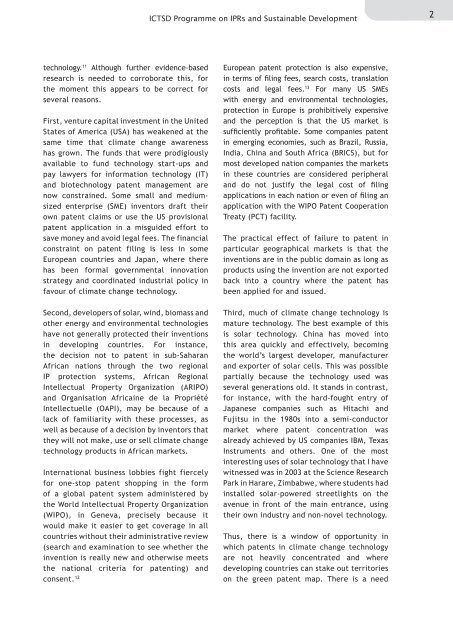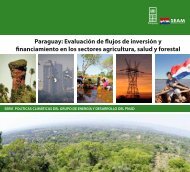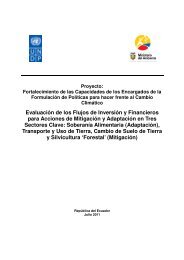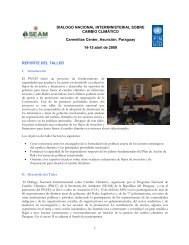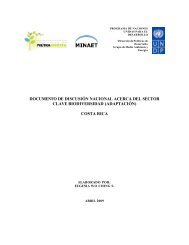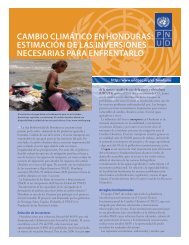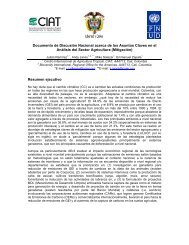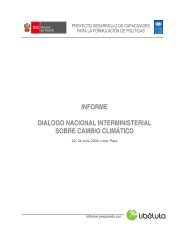View Publication - UNDPCC.org
View Publication - UNDPCC.org
View Publication - UNDPCC.org
Create successful ePaper yourself
Turn your PDF publications into a flip-book with our unique Google optimized e-Paper software.
ICTSD Programme on IPRs and Sustainable Development<br />
2<br />
technology. 11 Although further evidence-based<br />
research is needed to corroborate this, for<br />
the moment this appears to be correct for<br />
several reasons.<br />
First, venture capital investment in the United<br />
States of America (USA) has weakened at the<br />
same time that climate change awareness<br />
has grown. The funds that were prodigiously<br />
available to fund technology start-ups and<br />
pay lawyers for information technology (IT)<br />
and biotechnology patent management are<br />
now constrained. Some small and mediumsized<br />
enterprise (SME) inventors draft their<br />
own patent claims or use the US provisional<br />
patent application in a misguided effort to<br />
save money and avoid legal fees. The financial<br />
constraint on patent filing is less in some<br />
European countries and Japan, where there<br />
has been formal governmental innovation<br />
strategy and coordinated industrial policy in<br />
favour of climate change technology.<br />
Second, developers of solar, wind, biomass and<br />
other energy and environmental technologies<br />
have not generally protected their inventions<br />
in developing countries. For instance,<br />
the decision not to patent in sub-Saharan<br />
African nations through the two regional<br />
IP protection systems, African Regional<br />
Intellectual Property Organization (ARIPO)<br />
and Organisation Africaine de la Propriété<br />
Intellectuelle (OAPI), may be because of a<br />
lack of familiarity with these processes, as<br />
well as because of a decision by inventors that<br />
they will not make, use or sell climate change<br />
technology products in African markets.<br />
International business lobbies fight fiercely<br />
for one-stop patent shopping in the form<br />
of a global patent system administered by<br />
the World Intellectual Property Organization<br />
(WIPO), in Geneva, precisely because it<br />
would make it easier to get coverage in all<br />
countries without their administrative review<br />
(search and examination to see whether the<br />
invention is really new and otherwise meets<br />
the national criteria for patenting) and<br />
consent. 12<br />
European patent protection is also expensive,<br />
in terms of filing fees, search costs, translation<br />
costs and legal fees. 13 For many US SMEs<br />
with energy and environmental technologies,<br />
protection in Europe is prohibitively expensive<br />
and the perception is that the US market is<br />
sufficiently profitable. Some companies patent<br />
in emerging economies, such as Brazil, Russia,<br />
India, China and South Africa (BRICS), but for<br />
most developed nation companies the markets<br />
in these countries are considered peripheral<br />
and do not justify the legal cost of filing<br />
applications in each nation or even of filing an<br />
application with the WIPO Patent Cooperation<br />
Treaty (PCT) facility.<br />
The practical effect of failure to patent in<br />
particular geographical markets is that the<br />
inventions are in the public domain as long as<br />
products using the invention are not exported<br />
back into a country where the patent has<br />
been applied for and issued.<br />
Third, much of climate change technology is<br />
mature technology. The best example of this<br />
is solar technology. China has moved into<br />
this area quickly and effectively, becoming<br />
the world’s largest developer, manufacturer<br />
and exporter of solar cells. This was possible<br />
partially because the technology used was<br />
several generations old. It stands in contrast,<br />
for instance, with the hard-fought entry of<br />
Japanese companies such as Hitachi and<br />
Fujitsu in the 1980s into a semi-conductor<br />
market where patent concentration was<br />
already achieved by US companies IBM, Texas<br />
Instruments and others. One of the most<br />
interesting uses of solar technology that I have<br />
witnessed was in 2003 at the Science Research<br />
Park in Harare, Zimbabwe, where students had<br />
installed solar-powered streetlights on the<br />
avenue in front of the main entrance, using<br />
their own industry and non-novel technology.<br />
Thus, there is a window of opportunity in<br />
which patents in climate change technology<br />
are not heavily concentrated and where<br />
developing countries can stake out territories<br />
on the green patent map. There is a need


